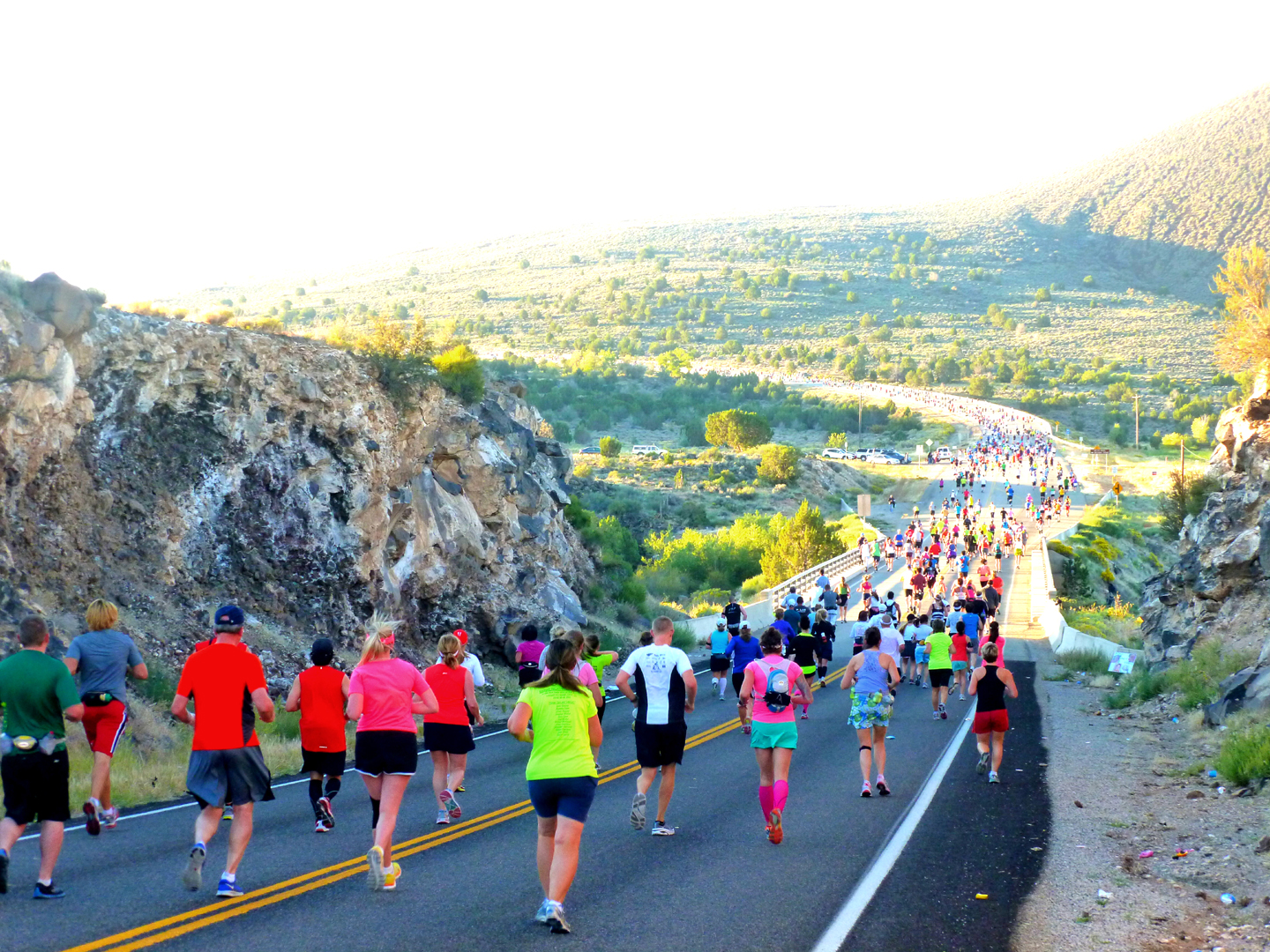
Feet are hitting the pavement all over Utah as the temperatures warm and marathon season comes into full swing.
While running races might not be for everyone, avid marathoners are encouraging runners of all shapes and sizes to get involved in the racing culture this summer and fall.
Training
“I think that barring some serious medical condition or injury, anyone can run a half or full marathon. Anyone can do one that is willing to work towards it,” said Blake Taylor, a BYU alumni living in Meridian, Idaho. He’s run 13 marathons, a 50k and several half marathons.
Tara Broberg has a lot of experience as well. She lives in Mapleton, Utah and has ran almost 20 marathons, 30 half marathons and one ultra 50-miler. Tara recommends starting with shorter races if you are a beginner and working your way up.
Be cautious of injury by not jumping your mileage too much too quickly. A good workout according to Broberg should consist of three running days a week. The first day should be a long run, the second a speed workout, the third a tempo run and a day off on the fourth day. Weight training or swimming are good substitutes for running.
Ed Eyestone, the head coach of BYU track and field, was on the 1988 and 1992 U.S. Olympic track and field team. He believes that anyone with a good work ethic can run a marathon and that there are many different ways to finish.
“There’s finishing a marathon, finishing without walking, finishing in a certain amount of time,” Eyestone said. “Each of those requires a different level of determination and grit.”
He recommends that runners set goals according to what is appropriate for them.
St. George Marathon
This is often considered the most popular marathon in Utah. It takes place in the fall and runners are able to train all summer. It is a large marathon with an entry cap of 7,800 participants. The course gets a lot of spectators out and has some scenic views. According to Broberg, St. George is a faster course because it has more downhill portions, but it also includes some good hills and ½ mile-to-one mile inclines. The scenery consists of red rock as runners travel through Snow Canyon.
The Utah Valley Marathon
Taylor felt that the Utah Valley Marathon was good, but said the finish was tough; he could see the finish line for six miles down University Avenue.
Brooke Palmer, a BYU student, chose this course as her first ever marathon and said she really enjoyed the experience.
“The mountains and landscape were absolutely beautiful, and the downhill terrain was very helpful,” Palmer said.
The Ogden Marathon
This is a spring race, which makes it a potential kick-starter for the marathon season. Rainy weather is typically a concern, especially with the final half-mile being downhill.
Broberg enjoyed this course because it was not located on a busy street and provided some great scenery.
The Big Cottonwood Marathon
Another spring marathon, the last several miles run through the city streets.
“I’ve never been injured after a marathon except after Big Cottonwood,” Broberg said, referring to the steep downhill slopes of the course.
Mt. Nebo Marathon
The Mt. Nebo Marathon is partly located in Payson Canyon along a designated Utah scenic tour. At one point on the course participants can see clear down into Nephi and most of the course is shaded with gorgeous trees. The first six miles is filled with hills, but the last 13 are up hill.
“Mt Nebo is a lot smaller, with about 200 people in the marathon last year, and it’s a bit more challenging at a higher elevation,” Taylor said. But the course is great and it was a fun event.”
Fundraising
Races have become a popular choice for organizations to hold as fundraisers, and millions of dollars are raised annually from them. Hundred and sometimes thousands of people come out to these events every year. According to the runners interviewed, they initially ran because of their own personal goals, but found greater fulfillment in using their bodies and skills to help others.
“A lot of running is self-involved because it is a lot about you as you’re working towards your goals, but now you can couple that with this opportunity to raise funds, (it) turns it into a little bit more of an alternative adventure,” Eyestone said.
The Burma Humanitarian Mission specifically benefits from the fundraising when they hold their annual race, Run for Refugees.
“Most people don’t have a personal connection to Burma,” said Jennifer Zurick, one of the founding members and executive director for the Burma Humanitarian Mission. “Its really hard to get people to care about these people that are all the way across the world that they’ve never seen. Running is something that people can connect to themselves, and then use that to help others,”




